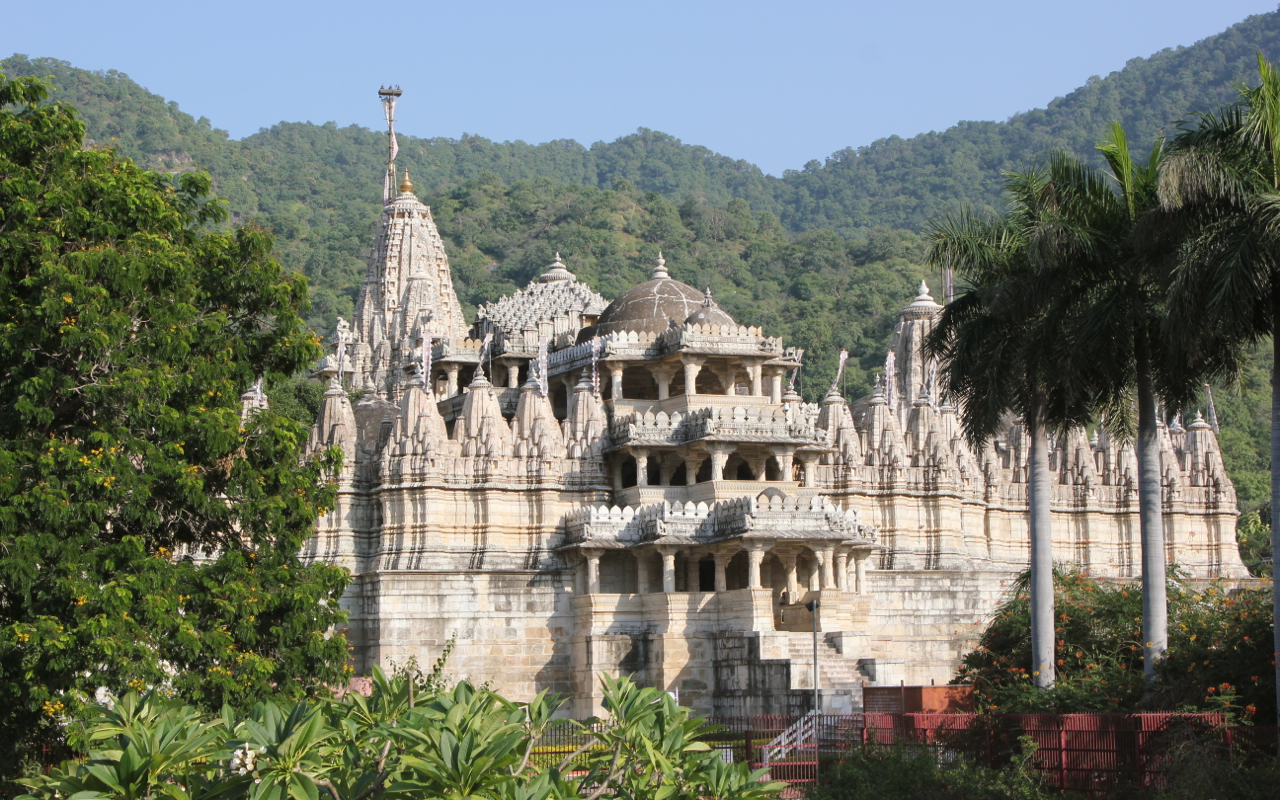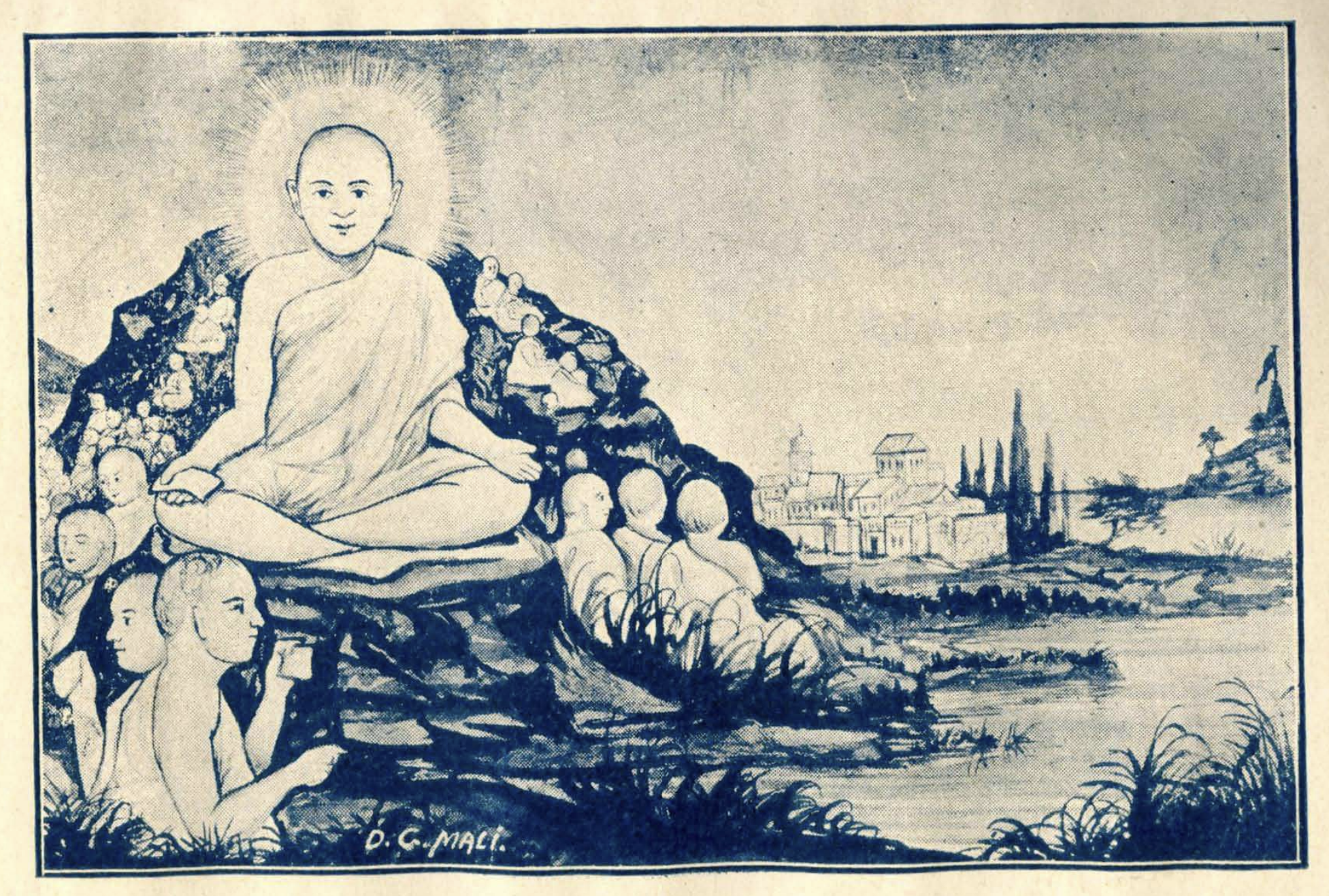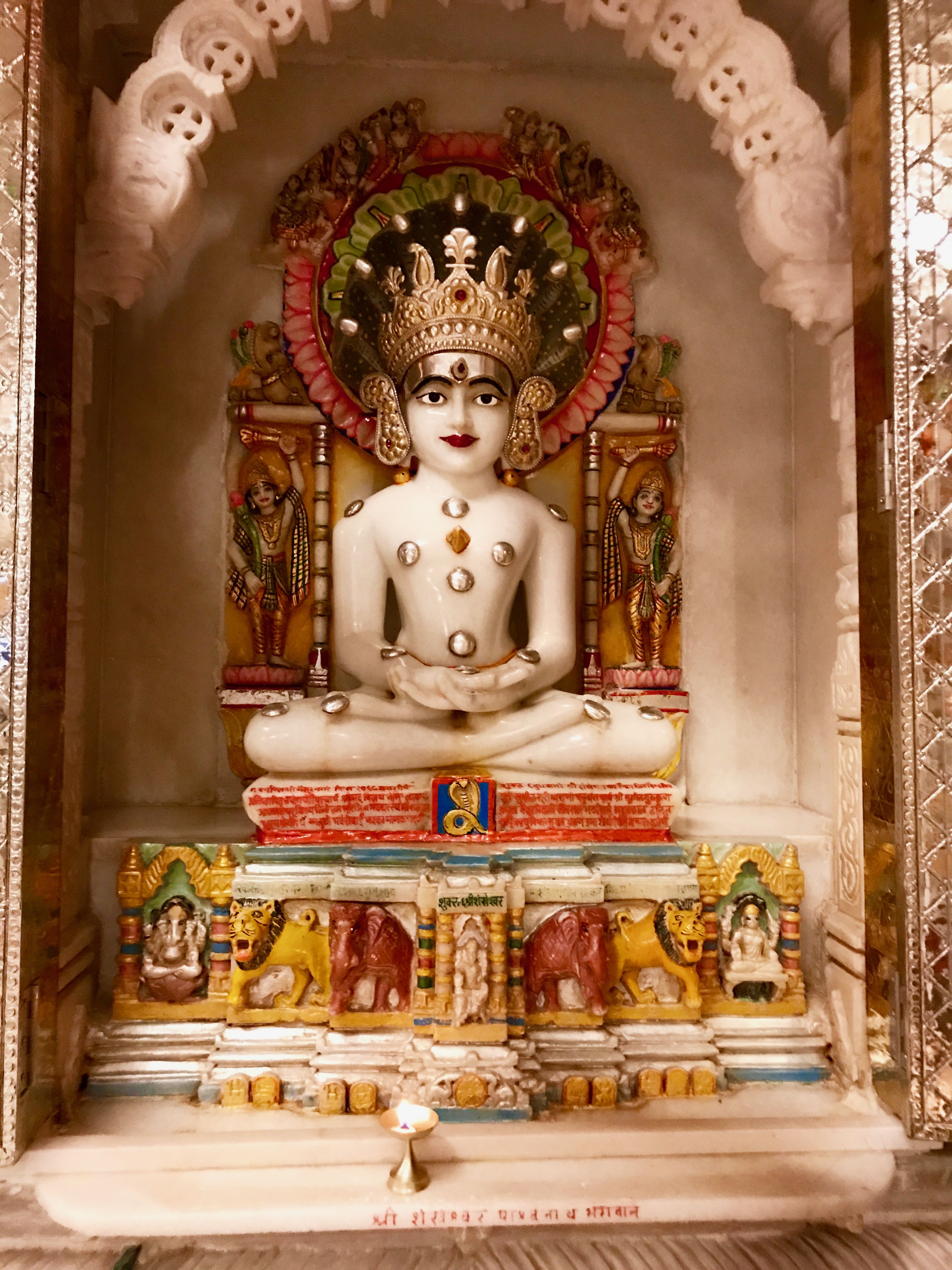|
Porwal
Poravāla, correctly called Poravāḍa, is a Kshatriya community that originated in southern Rajasthan, India. They are mainly of Jain or Hindu faith. The name Poravāla was applied on the basis of the names of other Bania communities ( Osavāla, Agaravāla, Khaṇḍelavāla, etc.). The name Poravāḍa is derived from Prāgavaṭa. The caste is divided into 24 gotras. They are also divided into three sections (from highest to lowest status): Visā, Dasā and Pañcā Poravāḍas. According to tradition the Visā and Dasā divisions arose in the 13th century. The brothers Vastupāla and Tejapāla were the sons of Poravāḍa father and Śrīmāli mother. The Poravādas who chose to eat with the brothers became Dasā, and those who refused became Visā. The Visā and Dasā interdine but do not intermarry. The Visās tend to be Jain while Dasā's tend to be Vaishnav. Formerly interreligious marriages occurred between Jains and Vaishnavs of the same sub-caste. They originate ... [...More Info...] [...Related Items...] OR: [Wikipedia] [Google] [Baidu] |
Swayamprabhasuri
Swayamprabhasuri or Svayamprabhasuri was a Śvetāmbara Jain ascetic and the 5th successor in the lineage of the monastic heads of the ''Chaturvidha Sangha's'' () Upkeśa Gaccha. He succeeded Keśiśramanācharya and is believed to have existed in 6th–5th century BC. He is known for establishing the '' Śrīmali'' and '' Porvāl'' clans. Birth and initiation Although not much is known about him, some non-canonical scriptures such as Ratnaprabhasuri's ''"Upkeśa Gaccha Caritra"'' () describe his ascetic life in detail and life before initiation into the ''Jain Sangha'' succinctly. As per scriptures of the Śvetāmbara sect, he is believed to have been born in the 6th century BC in a family belonging to the ''Vidyādhara'' clan. He is believed to have been initiated by Keśiśramanācharya, the 4th ''pattadhār'' () in the 23rd tirthankara Parshvanatha's lineage. Therefore, unlike most Jain ascetics today who trace their lineage to the 24th Tirthankara Mahavira, Swayam ... [...More Info...] [...Related Items...] OR: [Wikipedia] [Google] [Baidu] |
Agrawal
Agrawal (Agarwal, Agerwal, Agrawala, Agarwala, Agarwalla, Aggarwal, Agarawal'', ''Agarawala'', or Aggrawal) is a Bania caste. The Banias of northern India are a cluster of several communities, of which the Agrawal Banias, Maheshwari Banias, Oswal Banias, Khatri Banias and Porwal Banias are a part. They are found throughout northern India, mainly in the states of Rajasthan, Haryana, Punjab, Jammu and Kashmir, Chandigarh, Himachal Pradesh, Uttarakhand, Delhi, Chhattisgarh, Gujarat, Maharashtra and Uttar Pradesh. They are also found in the Pakistani provinces of Punjab and Sindh, though at the time of the partition of India, most of them migrated across the newly created border to independent India. Most Agrawals follow Vaishnava Hinduism or Jainism, while a minority adhere to Islam or Christianity. The Agrawal are the descendants of Maharaja Agrasen, a Kshatriya king of the Agroha Kingdom. He is one of the descendants of the Hindu deity Shri Ram. Their prime goddess was the ... [...More Info...] [...Related Items...] OR: [Wikipedia] [Google] [Baidu] |
Maheshwari
Maheshwari, also spelled Maheshvari, is a Hindu caste of India, originally from what is now the state of Rajasthan. Their traditional occupation is that of commerce and as such they form part of the wider Bania occupation-based community that also includes castes such as the Khandelwals, Oswals, Porwals, and Agrawals, Gahois. The Banias of Rajasthan are often known as Marwaris, and are also known as ''Mahajans'', a term which community members prefer because ''Bania'' can have negative connotations and imply a lower social position than that which they believe themselves to hold. History The Maheshwaris claim a Rajput ancestry. K. K. Birla, an industrialist whose family has its origins in the Maheshwari caste, recounted a traditional story of origin for the community. This states that 72 groups from the Kshatriya varna in what is now Rajasthan decided in the 8th century to abandon their traditional role in favour of being members of the Vaishya varna. Inspired to do th ... [...More Info...] [...Related Items...] OR: [Wikipedia] [Google] [Baidu] |
Oswal
The Oswal (sometimes spelled Oshwal or Osval) are a Śvētāmbara, Śvetāmbara Jain merchant community with origins in Osian, Jodhpur, Osian, a town in the Marwar region of Rajasthan, India. According to research by James Tod, Colonel James Tod, Osavālas are purely of Rajput origins and they belong to not one, but several different Rajput tribes. The Osavālas origin legend has multiple aspects, all of which include a fierce, meat-eating goddess who becomes pacified by a Jain ascetic, involving the conversion of a king to Jainism. In modern times, there are barely any Osavālas living in Osiyān, but they still regard the Mahavira Jain temple, Osian, Mahavira temple and Sachiya Mata Temple as their "mother temples". They reside in Rajasthan, Malwa, Gujarat, and Kutch district, Kutch. They were formerly also found in the Tharparkar district of Sindh (Partition of India, pre-partition). Creation of the ''Oswāl clan'' Ratnaprabhasuri's penance near Upkeśapattan According to ... [...More Info...] [...Related Items...] OR: [Wikipedia] [Google] [Baidu] |
Shrimal
Bhinmal (previously Shrimal Nagar) is an ancient town in the Jalore District of Rajasthan, India. It is south of Jalore. Bhinmal was the early capital of Gurjaradesa, comprising modern-day southern Rajasthan and northern Gujarat. The town was the birthplace of the Sanskrit poet Magha and mathematician-astronomer Brahmagupta. History The original name of Bhinmal was Bhillamala. Its older name was Srimal, from which Shrimali Brahmins took their name. Xuanzang, the Chinese Buddhist pilgrim who visited India between 631 and 645 AD during Harsha's reign, mentioned this place as ''Pi-lo-mo-lo''. There are different views about the origin of its name. It is suggested that it may from its Bhil population, whereas Shrimalamahatmaya said the name arose because of the poverty caused by Islamic invaders, which caused most of its people to migrate from the area. It was the early capital of the kingdom of Gurjaradesa. The kingdom is first mentioned in Banabhatta's ''Harshacharita'' in the ... [...More Info...] [...Related Items...] OR: [Wikipedia] [Google] [Baidu] |
Jainism
Jainism ( ), also known as Jain Dharma, is an Indian religions, Indian religion whose three main pillars are nonviolence (), asceticism (), and a rejection of all simplistic and one-sided views of truth and reality (). Jainism traces its spiritual ideas and history through the succession of twenty-four , supreme preachers of ''dharma''. The first in the current time cycle is Rishabhadeva, who tradition holds lived millions of years ago; the 23rd is Parshvanatha, traditionally dated to the 9th century Common Era, BCE; and the 24th is Mahāvīra, Mahavira, who lived . Jainism is considered an eternal ''dharma'' with the guiding every time cycle of the Jain cosmology, cosmology. Central to understanding Jain philosophy is the concept of ''bhedavijñāna'', or the clear distinction in the nature of the soul and non-soul entities. This principle underscores the innate purity and potential for liberation within every Jīva (Jainism), soul, distinct from the physical and menta ... [...More Info...] [...Related Items...] OR: [Wikipedia] [Google] [Baidu] |
Bhinmal
Bhinmal (previously Shrimal Nagar) is an ancient town in the Jalore District of Rajasthan, India. It is south of Jalore. Bhinmal was the early capital of Gurjaradesa, comprising modern-day southern Rajasthan and northern Gujarat. The town was the birthplace of the Sanskrit poet Magha and mathematician-astronomer Brahmagupta. History The original name of Bhinmal was Bhillamala. Its older name was Srimal, from which Shrimali Brahmins took their name. Xuanzang, the Chinese Buddhist pilgrim who visited India between 631 and 645 AD during Harsha's reign, mentioned this place as ''Pi-lo-mo-lo''. There are different views about the origin of its name. It is suggested that it may from its Bhil population, whereas Shrimalamahatmaya said the name arose because of the poverty caused by Islamic invaders, which caused most of its people to migrate from the area. It was the early capital of the kingdom of Gurjaradesa. The kingdom is first mentioned in Banabhatta's ''Harshacharita'' in ... [...More Info...] [...Related Items...] OR: [Wikipedia] [Google] [Baidu] |
Śvetāmbara
The Śvetāmbara (; also spelled Shwetambara, Shvetambara, Svetambara or Swetambara) is one of the two main branches of Jainism, the other being the Digambara. ''Śvetāmbara'' in Sanskrit means "white-clad", and refers to its ascetics' practice of wearing white clothes, which sets it apart from the ''Digambara'' or "sky-clad" Jains whose ascetic practitioners go nude. Śvetāmbaras do not believe that ascetics must practice nudity. The Śvetāmbara and Digambara traditions have had historical differences ranging from their dress code, their temples and iconography, attitude towards Jain nuns, their legends and the texts they consider as important. Śvetāmbara Jain communities are currently found mainly in Gujarat, Rajasthan and coastal regions of Maharashtra. According to Jeffery D. Long, a scholar of Hindu and Jain studies, about four-fifths of all Jains in India are Śvetāmbaras. History and lineage Śvetāmbaras consider themselves to be the original followers of Maha ... [...More Info...] [...Related Items...] OR: [Wikipedia] [Google] [Baidu] |
Krishna
Krishna (; Sanskrit language, Sanskrit: कृष्ण, ) is a major deity in Hinduism. He is worshipped as the eighth avatar of Vishnu and also as the Supreme God (Hinduism), Supreme God in his own right. He is the god of protection, compassion, tenderness, and love; and is widely revered among Hindu divinities. Krishna's birthday is celebrated every year by Hindus on Krishna Janmashtami according to the lunisolar calendar, lunisolar Hindu calendar, which falls in late August or early September of the Gregorian calendar. The anecdotes and narratives of Krishna's life are generally titled as ''Krishna Līlā''. He is a central figure in the ''Mahabharata'', the ''Bhagavata Purana'', the ''Brahma Vaivarta Purana,'' and the ''Bhagavad Gita'', and is mentioned in many Hindu philosophy, Hindu philosophical, Hindu theology, theological, and Hindu mythology, mythological texts. They portray him in various perspectives: as a god-child, a prankster, a model lover, a divine hero, ... [...More Info...] [...Related Items...] OR: [Wikipedia] [Google] [Baidu] |
Telangana Region
Telangana is a state in India situated in the south-central part of the Indian subcontinent on the high Deccan Plateau. It is the eleventh largest state by area and the twelfth most populated state in India, according to the 2011 census. On 2 June 2014, the area was separated from the northwestern part of United Andhra Pradesh as the newly formed state of Telangana, with Hyderabad as its capital. Telugu, one of the classical languages of India, is the most widely spoken and the primary official language of Telangana state, whereas Urdu is recognised as the second official language. Additionally, several tribal languages such as Gondi, Kolami, Koya and Lambadi are spoken in different regions of the Telangana state. The economy of Telangana is the eighth largest in India, with a gross state domestic product (GSDP) of and has a GSDP per capita of for the financial year 2024–25. Telangana has emerged as a major focal point for IT software companies, industry and t ... [...More Info...] [...Related Items...] OR: [Wikipedia] [Google] [Baidu] |
Sringara
Sringara (, ) is one of the nine rasas, usually translated as erotic love, romantic love, or as attraction or beauty. ''Rasa'' means "flavour", and the theory of rasa is the primary concept behind classical Indian arts including theatre, music, dance, poetry, and sculpture. Much of the content of traditional Indian arts revolves around the relationship between a man and a woman. The primary emotion thus generated is Sringara. The romantic relationship between lover and beloved is a metaphor for the relationship between the individual and the divine. Classical theater/dancers (i.e. Bharatanatyam, Odissi, Mohiniyattam) refer to Sringara as 'the Mother of all rasas.' Sringara gives scope for a myriad of other emotions including jealousy, fear, anger, compassion, and of course for the expression of physical intimacy. No other Rasa has such a vast scope. The treatment and performance of Sringara varies on a large scale from the grotesque (as in Koodiyattam) to very refined and subt ... [...More Info...] [...Related Items...] OR: [Wikipedia] [Google] [Baidu] |
Bhog
Bhoga () is a Sanskrit term meaning "enjoyment; pleasure; experience". Etymologically, bhoga is derived from the root ''bhuj-'', meaning to "enjoy", "consume", or "relish". Bhoga in general usage refers to the consecrated food offering to a deity, or enjoyment of worldly pleasures. Denotatively, the meaning of the term bhoga is associated with the concepts such as "delight, enjoyment, consumption, indulgence, experience, and sensual pleasure", whereas, a connotative meaning implies to experience "pleasure without attachment." In Hindu philosophy, bhoga and yoga are viewed as the two paths leading to nirvana. The power of maya is believed to provide bhoga to an individual-subject experiencer (bhogin), so that their self attains maturity and realizes its oneness with the higher self. In the Dvaita Vedanta tradition, bhoga is "Enjoyment or unending bliss in the state of liberation." It is asserted that the self can have bhoga only while it has a body, and ceases to have it so af ... [...More Info...] [...Related Items...] OR: [Wikipedia] [Google] [Baidu] |






